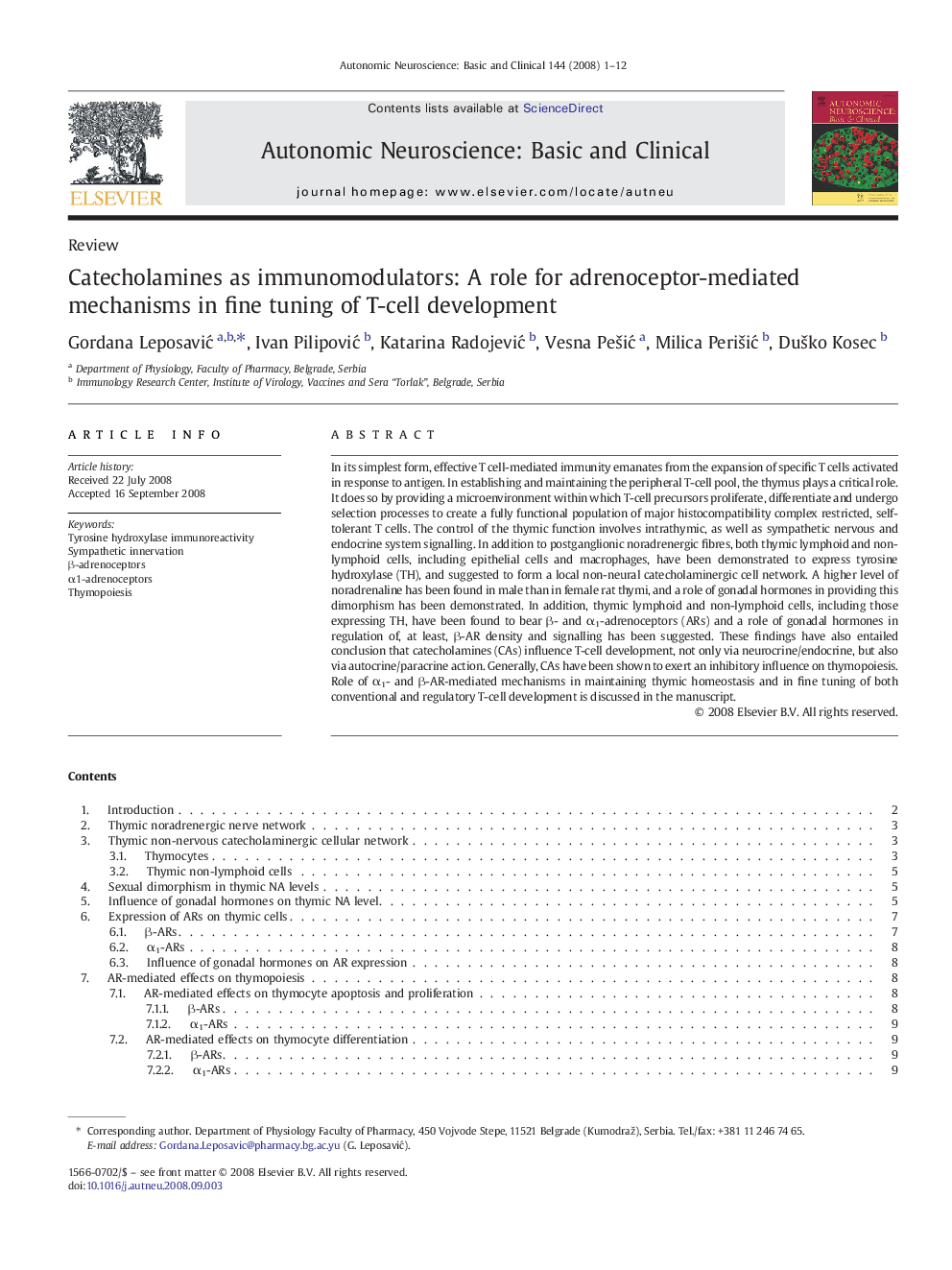| Article ID | Journal | Published Year | Pages | File Type |
|---|---|---|---|---|
| 3035497 | Autonomic Neuroscience | 2008 | 12 Pages |
In its simplest form, effective T cell-mediated immunity emanates from the expansion of specific T cells activated in response to antigen. In establishing and maintaining the peripheral T-cell pool, the thymus plays a critical role. It does so by providing a microenvironment within which T-cell precursors proliferate, differentiate and undergo selection processes to create a fully functional population of major histocompatibility complex restricted, self-tolerant T cells. The control of the thymic function involves intrathymic, as well as sympathetic nervous and endocrine system signalling. In addition to postganglionic noradrenergic fibres, both thymic lymphoid and non-lymphoid cells, including epithelial cells and macrophages, have been demonstrated to express tyrosine hydroxylase (TH), and suggested to form a local non-neural catecholaminergic cell network. A higher level of noradrenaline has been found in male than in female rat thymi, and a role of gonadal hormones in providing this dimorphism has been demonstrated. In addition, thymic lymphoid and non-lymphoid cells, including those expressing TH, have been found to bear β- and α1-adrenoceptors (ARs) and a role of gonadal hormones in regulation of, at least, β-AR density and signalling has been suggested. These findings have also entailed conclusion that catecholamines (CAs) influence T-cell development, not only via neurocrine/endocrine, but also via autocrine/paracrine action. Generally, CAs have been shown to exert an inhibitory influence on thymopoiesis. Role of α1- and β-AR-mediated mechanisms in maintaining thymic homeostasis and in fine tuning of both conventional and regulatory T-cell development is discussed in the manuscript.
